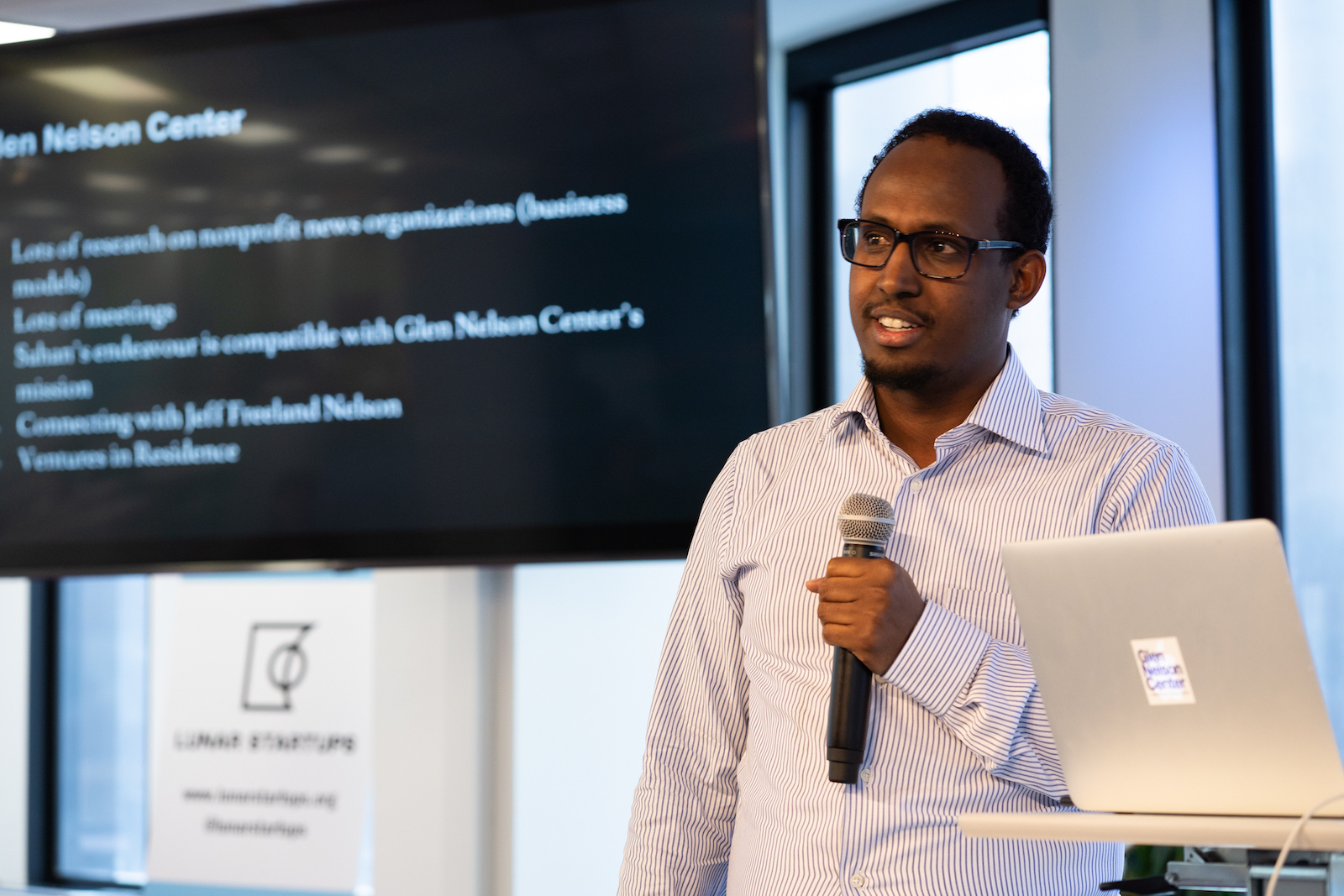
The state of Minnesota is home to nearly 500,000 immigrants, and the state has a much larger proportion of Asian and African immigrants than the rest of the United States: It is the home of the largest Somali population in the U.S., and the second-largest Hmong population. Last year, Minneapolis’s Ilhan Omar became the first Somali-American elected to the U.S. House of Representatives.
While a variety of ethnic publications seek to serve Minnesota’s individual immigrant population, there has not been one news source targeting them all. That will change with the launch this spring of Sahan Journal, an online news organization that will cover immigrant communities in the state. Sahan Journal was founded by Mukhtar Ibrahim, who was born in Somalia and lived most of his adult life in Minnesota. Prior to going out on his own, he was a staff writer for the Minneapolis Star Tribune and for Minnesota Public Radio News. He is launching Sahan Journal as an employee of MPR News, which will provide funding and support to the Journal for at least its first 18 months; Ibrahim will also continue to report some stories for MPR News.
Ibrahim launched an earlier version of Sahan Journal in 2013; that iteration of the site covered, in English, news that was happening in Ethiopia and Somalia. But Ibrahim began conceiving of the new version — one that would cover immigrant communities living in Minnesota — when he applied for a fellowship from Minnesota’s Bush Foundation in 2016. The $100,000 grant he received covered his tuition and living expenses at Columbia’s School of Journalism, where he received his master’s degree in investigative journalism in 2017.
“This project was always at the back of my mind,” Ibrahim said, and following his time at the Star Tribune and MPR, “it felt like the right time in my career to take the risk and commit to working on Sahan Journal fulltime.” He sees the site as “a one-stop shop for all things about immigrants in Minnesota,” pointing to online nonprofit MinnPost’s coverage of state politics and policy as a model.
This one-stop shop is also currently a one-man shop, with Ibrahim reporting to Nancy Cassutt, executive director of MPR News. The Glen Nelson Center, an incubator for public media projects run by American Public Media, is providing the Journal with office space and helping with business strategy. Ibrahim is still dealing with the process of getting Sahan Journal certified as a nonprofit. The next hires will be a managing editor and freelance reporters, with launch targeted for May.
“It’s an unusual partnership, but Mukhtar’s vision is something that aligns with the MPR News vision of serving different communities. When you have a dominant white culture trying to reach communities that are not white, it is helpful to have different viewpoints and people of color doing some of that work,” Cassutt said. “Mukhtar is a dogged, really good reporter who has so much potential…so we’re investing in him.”
Sahan Journal, Ibrahim says, will be “a place that will tell the stories of immigrant communities with nuance and complexity. We want to show how these communities are transforming, what they’re going through, and be a professional news website that produces high-quality, highly edited stories.” He hopes that it will be read both by the immigrants themselves and by the broader Minnesota community. “This is content about immigrants, but our audience is all Minnesotans.”
Twin Cities/MN home to largest:
1) Urban Hmong population in the nation
2) Somali population in the country
3) Karen community in the country
4) One of largest Liberian communities in the countryAnd yet I can count on one hand how many reporters of those ethnicities work in MSM https://t.co/0oSzGbk1Gc
— Nancy Yang (@n_yang) January 11, 2019
Minnesota Public Radio’s support of Sahan Journal comes at a time when it — like other news organizations in Minnesota and nationally — is grappling with diversifying its own staff and coverage. “Newsrooms are lucky in the Twin Cities if they have one person who’s dedicated to covering issues about immigrant communities, but there are times when they are still stretched with covering the news of the day,” said Laura Yuen, a correspondent and editor for new audiences at MPR who is also a Sahan Journal board member. (Yuen is currently spearheading MPR’s Racial Narratives conference, which will bring Minnesota news organizations together next week to help “news professionals uncover their own biases and assumptions, and [amplify] community solutions to narrative change” — stay tuned for more coverage of that on Nieman Lab.) “[Sahan Journal] can be a dedicated space where these stories are top priority, where there is a lot of attention to and robust coverage of issues that matter to immigrant communities in Minnesota.”
Ibrahim pointed to Minnesota’s 2018 gubernatorial election as an event that could have included more coverage of and for immigrant communities. News organizations reported on the candidates’ clashing views on immigration and refugee resettlement, but rarely talked to Minnesota’s immigrants themselves, Ibrahim said. “The media was covering what the politicians were saying, without going into [immigrant] communities and asking them how they were feeling or how those policies would affect their lives,” he said. “We are not doing a good job with having a diverse angle of coverage, which is different from diversifying the actual staff.”
Sahan Journal, he says, will go into immigrant communities to build trust and report. It may take time, “but it is coverage that Minnesota should have.”